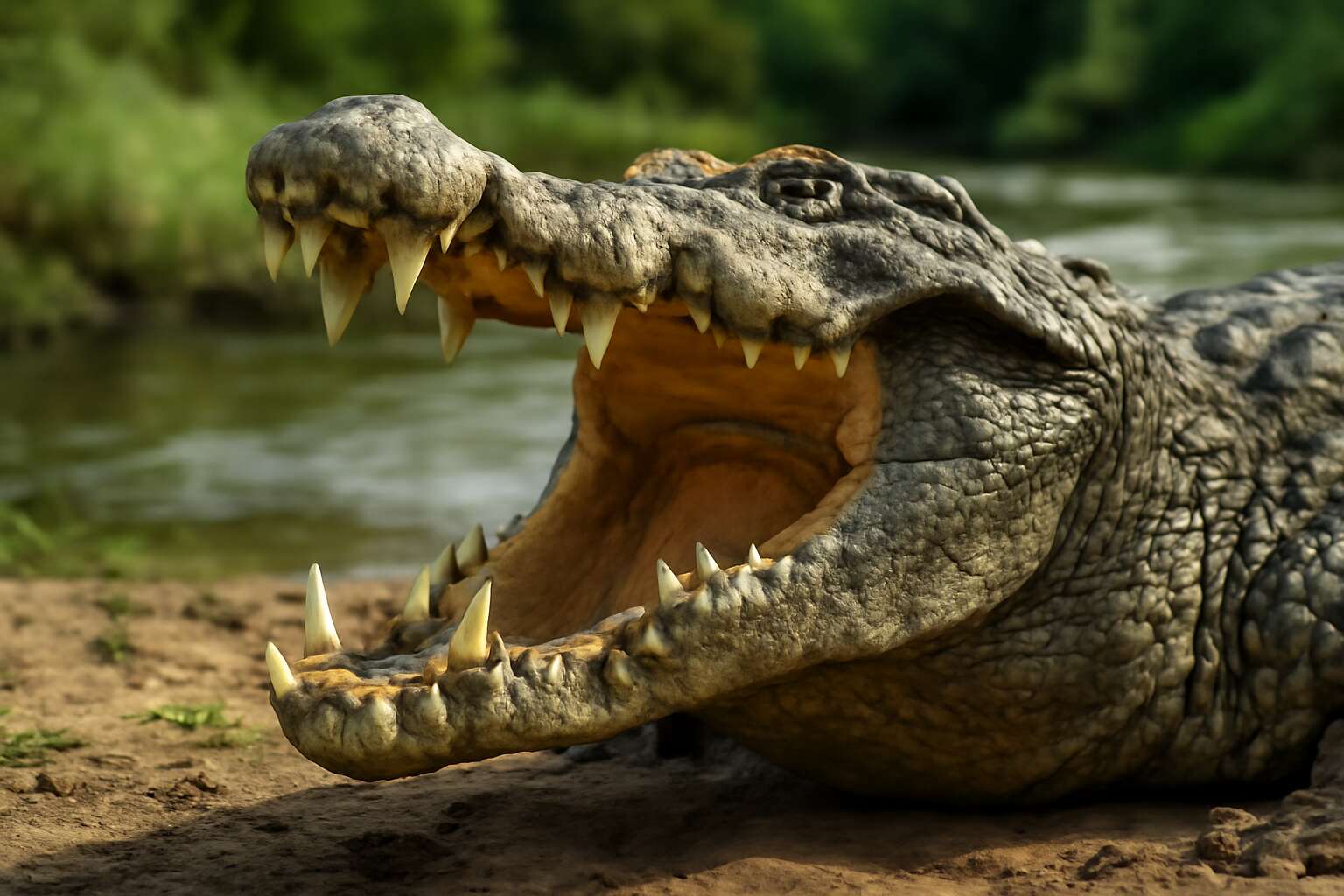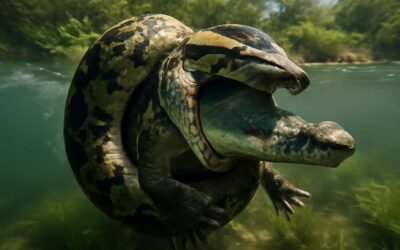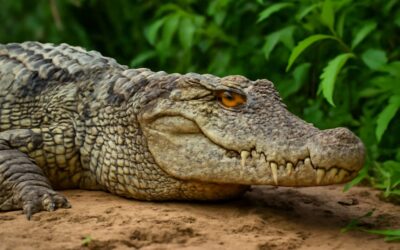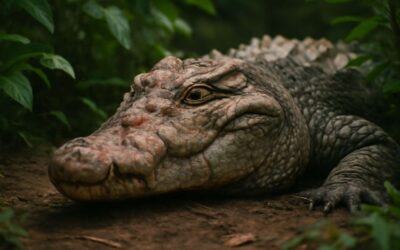Understanding Crocodile Anatomy and Physiology
Overview of crocodile jaw structure
When contemplating the formidable bite force of crocodiles, it’s impossible not to marvel at their intricate anatomical mastery. Beneath their rugged, scaled exterior lies a marvel of evolutionary engineering—an amalgamation of muscular precision and skeletal robustness. The crocodile’s jaw structure, in particular, exemplifies this, embodying a design that balances power with agility, allowing these ancient predators to dominate their aquatic and terrestrial realms.
The jaw muscles are arranged in a manner that maximises force output, with a specialised hinge mechanism that amplifies their crushing capabilities. Their skulls, broad and reinforced with dense bone, serve as a durable platform capable of withstanding tremendous pressure. The bite force of crocodile, often exceeding 1,000 pounds per square inch (psi), is a testament to this sophisticated architecture. Such strength isn’t merely a product of raw muscle but a complex interplay of physiology and biomechanics, making crocodiles unrivalled in the animal kingdom for sheer bite power.
To better appreciate this, consider the following aspects of crocodile jaw anatomy:
- Robust temporalis and pterygoid muscles that generate immense bite force
- Reinforced skull bones that prevent fractures during high-pressure bites
- Specialised hinge joints that allow a wide gape and precise force application
Understanding these elements offers deeper insight into why the bite force of crocodile remains one of nature’s most awe-inspiring feats of physical adaptation. Their jaws are not just tools for feeding—they are symbols of evolutionary mastery, capable of exerting pressure that can crush bones with ease.
Muscle groups responsible for biting
The impressive bite force of crocodile is rooted in a sophisticated system of muscle groups and skeletal design. Their powerful jaw muscles, primarily the temporalis and pterygoid muscles, work together to generate extraordinary pressure. These muscles are highly specialised, allowing crocodiles to exert a bite force that can surpass 1,000 pounds per square inch (psi). Such strength is crucial for crushing bones and tearing through tough prey, making their bite force one of the most formidable in the animal kingdom.
The crocodile’s skull is reinforced with dense, reinforced bones that prevent fractures during these intense bites. The specialised hinge joints enable a wide gape, providing both agility and force application. Inside, the arrangement of muscle fibres maximises efficiency, converting physiological power into raw crushing strength. For a clearer understanding, consider this overview:
- Robust temporalis and pterygoid muscles responsible for biting power
- Reinforced skull bones that withstand high-pressure bites
- Specialised hinge joints allowing a wide gape and precise force control
All these elements come together, making the bite force of crocodile not just a biological feat but a symbol of evolutionary mastery. It’s a reminder of how nature’s engineering can produce a predator capable of exerting tremendous pressure with such finesse and resilience.
Unique features of crocodile skulls
When it comes to jaw-dropping strength, crocodiles take the cake—or should I say, the bones! Their skulls are nothing short of engineering marvels, designed to withstand the brutal demands of their formidable bite force of crocodile. Unlike human skulls, which are delicate and easily fractured, crocodile skulls are reinforced with dense, specialised bones that act as a natural armour, preventing fractures during those legendary crushing sessions.
One of the most fascinating features of crocodile anatomy is their unique skull structure, which includes a series of highly specialised hinge joints. These joints allow for an impressive wide gape, enabling the crocodile to open its jaws with a ferocity that could make even the bravest hunter think twice. The skull’s internal architecture is optimised for force transmission, with muscle attachments positioned perfectly to channel maximum power into each bite.
To understand the true extent of their jaw prowess, consider this: the bite force of crocodile can surpass 1,000 pounds per square inch (psi). This incredible strength is sustained by the crocodile’s robust skull and muscle design, making it an apex predator capable of crushing bones and tearing through the toughest prey with ease. Truly, the crocodile’s skull isn’t just a bony helmet; it’s a testament to evolutionary brilliance in predator engineering.
Bite Force of Crocodiles
Average bite force across different crocodile species
The bite force of a crocodile is nothing short of awe-inspiring; some species can exert over 1,500 pounds per square inch, making their jaws among the most powerful in the animal kingdom. This incredible strength allows them to crush bones, shells, and even large prey with ease, demonstrating an evolutionary mastery of predatory efficiency.
When comparing different crocodile species, variations in bite force are notable. The saltwater crocodile (*Crocodylus porosus*), for instance, boasts the highest bite force among crocodilians, often reaching upwards of 3,700 pounds per square inch. In contrast, smaller species like the New Guinea crocodile (*Crocodylus novaeguineae*) typically exhibit lower but still formidable bite forces.
To appreciate the sheer power behind the bite force of crocodile, consider this list of factors influencing it:
- Size and age of the individual crocodile
- Diet and hunting habits
- Muscle mass and skull robustness
Understanding these nuances reveals why the bite force of crocodile remains a subject of fascination and scientific inquiry, embodying a perfect blend of strength, adaptability, and predatory prowess.
Record-breaking crocodile bite force measurements
When it comes to the bite force of crocodiles, science has pushed the boundaries of what we thought was possible. The record-breaking measurements are nothing short of astonishing—some crocodiles have been documented to exert a jaw-clenching force exceeding 3,700 pounds per square inch. This level of strength surpasses many other predators and underscores the crocodile’s status as a true apex predator in aquatic ecosystems.
In the quest to quantify this formidable force, researchers often employ specialised sensors that withstand the immense pressure. Notably, specimens of the saltwater crocodile (*Crocodylus porosus*) have consistently demonstrated the highest bite force of all crocodilian species. Such measurements reveal not only raw power but also the evolutionary adaptations that allow these creatures to crush bones, shells, and even large prey with effortless dominance.
Interestingly, the bite force of crocodile can vary considerably based on factors such as size, age, and hunting habits. Larger, mature crocodiles tend to possess an exponentially greater bite force, exemplifying the relationship between physical development and predatory capability. This variability adds a layer of complexity to understanding their ecological roles and predatory strategies.
Factors influencing bite strength
The bite force of crocodile is nothing short of legendary—imagine a force so powerful it could crush bones, shells, and even boats (well, maybe not boats, but close enough). But what influences this jaw-jarring strength? Size, age, and hunting habits all play pivotal roles in determining just how ferocious a crocodile’s bite can get. As these ancient predators grow larger and more experienced, their bite force tends to skyrocket, turning them into underwater wrecking balls.
Interestingly, certain factors can cause significant variation in bite force measurements. For instance, a juvenile crocodile’s jaw may resemble a sprinter’s punch, while a mature, hefty saltwater crocodile can unleash a force exceeding 3,700 pounds per square inch. To understand this variability, consider these key influences:
- Physical maturity and size, which correlate directly with muscle mass and jaw robustness
- Dietary habits—predators with a diet of tough shells and bones develop stronger bite forces over time
- Environmental factors, including prey availability and habitat type, which shape their predatory adaptations
So, whether you’re marveling at their raw power or pondering how evolution shaped their formidable bite force of crocodile, one thing remains clear: these creatures are the ultimate jaw-dropping marvels of the animal kingdom!
Comparing Crocodile Bite Force to Other Predators
Bite force of alligators
The bite force of crocodile is nothing short of legendary among predators. With some specimens capable of exerting over 3,700 pounds per square inch (psi), they sit comfortably atop the hierarchy of jaw power. But how does this compare to other apex predators? When pitted against animals like lions or great white sharks, crocodiles often come out on top in sheer strength. Their formidable bite force allows them to crush bones and shell with ease, a feat that many predators can only dream of.
In fact, the bite force of crocodile surpasses that of most terrestrial predators. For example, lions, often regarded as king of the savannah, have a bite force of around 650 psi—significantly lower than that of a crocodile. Meanwhile, the great white shark boasts a bite force of approximately 1,800 psi, still less than the formidable crocodile. This disparity highlights how crocodiles’ incredible jaw strength makes them one of nature’s most terrifying predators.
- Alligators generally have a lower bite force of about 2,125 psi, but still impressive enough to dominate their environment.
- Saltwater crocodiles hold the record for the strongest bite force among all living animals, a true testament to their predatory prowess.
Understanding the bite force of crocodile in comparison to other predators reveals just how uniquely powerful these creatures are. Their jaw strength isn’t just about crushing prey—it’s a weapon that secures their dominance in the wild, making them one of the most awe-inspiring predators on Earth.
Bite force of large predators like lions and sharks
The bite force of crocodile remains one of the most astonishing feats in the animal kingdom. With some specimens exerting over 3,700 pounds per square inch (psi), their jaw strength surpasses that of many other apex predators. When comparing the bite force of crocodile to terrestrial giants like lions, the difference becomes even more striking. Lions typically have a bite force of around 650 psi, a formidable number in its own right, but pale in comparison to the crocodile’s jaw power.
Similarly, when pitted against marine predators such as the great white shark, the disparity is clear. The great white’s bite force hovers around 1,800 psi—still less than even an average saltwater crocodile. This incredible variance underscores the crocodile’s dominance in its environment, where sheer jaw strength is vital for crushing bones and shells with ease. It’s this formidable bite force of crocodile that cements its reputation as one of nature’s most terrifying and efficient predators.
How crocodile bite compares globally
The bite force of crocodile is nothing short of extraordinary, especially when placed alongside other apex predators. While lions command respect with a bite force of approximately 650 psi, and great white sharks boast around 1,800 psi, crocodiles surpass both with readings exceeding 3,700 psi. This staggering power allows them to crush bones and shells effortlessly, asserting their dominance in their aquatic habitats.
To put this into perspective, consider how the crocodile’s jaw strength compares on a global scale. Its bite force is not just formidable; it’s nearly double that of many land predators and significantly stronger than most marine predators. This disparity highlights why crocodiles are often regarded as one of the most powerful creatures in the animal kingdom. Their bite force of crocodile is a crucial factor in their survival, enabling them to secure prey with relentless efficiency.
Scientific Methods for Measuring Crocodile Bite Force
Technology and equipment used
Measuring the bite force of a crocodile isn’t as simple as clamping down and hoping for the best. Scientific methods employ cutting-edge technology to get precise readings, all while keeping the researchers safe from a potentially jaw-breaking encounter. One common approach involves using a specially designed pressure-sensitive transducer—think of it as a high-tech, ultra-durable sensor pad—that the crocodile bites onto. This sensor then transmits data to a connected computer, revealing the raw power behind those fearsome jaws.
Modern equipment for measuring bite force of crocodile often includes load cells and strain gauges, which are capable of capturing the immense force generated during a bite. Researchers might also employ motion-capture cameras to track jaw movement and muscle engagement, giving a full picture of how force is applied in real-time. To ensure accuracy, the setup needs to account for variables like the crocodile’s size, age, and even mood—because, let’s face it, a grumpy croc might bite differently than a sleepy one!
- Pressure-sensitive transducers
- Load cells
- Strain gauges
- High-speed cameras
All these tools together help scientists quantify just how formidable the bite force of crocodile truly is—making it not only a marvel of nature but also a fascinating subject for biomechanical research. And believe me, when you see the data, you’ll understand why these creatures top the predator charts in jaw strength!
Field studies vs. laboratory tests
Scientific methods for measuring the bite force of crocodiles vary significantly between field studies and laboratory tests. Field studies offer the advantage of observing animals in their natural habitat, capturing real-world bite force data. Researchers often use portable, pressure-sensitive transducers to record bite force directly from crocodiles in the wild. These devices are designed to withstand the strength of a crocodile’s jaws while ensuring minimal disturbance to the animal. However, variability in environmental factors and animal behaviour can influence the accuracy of field measurements.
In contrast, laboratory tests provide a controlled environment where variables like temperature, stress levels, and animal size can be tightly regulated. This setting allows for the use of advanced equipment such as load cells, strain gauges, and high-speed cameras, which can deliver precise measurements of bite force of crocodile under ideal conditions.
- Controlled settings improve data consistency
- Allow for detailed biomechanical analysis
Researchers can then compare these lab results with field data to get a comprehensive understanding of the true strength of crocodile jaws.
Challenges in measuring crocodile bite force accurately
Measuring the bite force of crocodile remains one of nature’s most formidable puzzles—an awe-inspiring dance between biology and technology. Yet, capturing the true strength of their jaws is no simple feat; it’s a delicate ballet of scientific precision and environmental unpredictability. The challenge lies in balancing the need for authentic data with the constraints of safety and animal welfare. Field studies, while invaluable for observing crocodiles in their natural habitat, often grapple with variables like water conditions, temperature fluctuations, and unpredictable animal behaviour. These factors can obscure the raw magnitude of a crocodile’s bite force, making it elusive as a shadow in the wild.
By contrast, laboratory tests offer a sanctuary of control—an arena where variables like stress, temperature, and size are meticulously managed. Advanced equipment such as load cells and strain gauges allow researchers to record the bite force of crocodiles with remarkable accuracy, revealing insights often concealed in the chaos of nature. However, this controlled environment, while precise, risks stripping away the natural context that truly defines a crocodile’s bite force. The quest to understand this primal power continues to evolve, with scientists comparing lab data against field measurements to uncover the hidden depths of these ancient predators’ strength.
Implications of Crocodile Bite Force
Impact on prey and hunting strategies
The formidable bite force of crocodile is nothing short of astonishing. With some species capable of exerting over 1.8 tonnes of pressure, these ancient predators are engineering marvels of evolutionary design. Such immense strength radically influences their hunting strategies, allowing them to seize prey with unrelenting power, often crushing bones with ease. This brute force ensures their dominance in aquatic ecosystems, where subtlety often takes a backseat to raw, unyielding strength.
Implications of the bite force of crocodile extend beyond mere brute strength; it shapes their entire predatory approach. Crocodiles frequently employ ambush tactics, lying motionless beneath the water’s surface until the perfect moment to strike. Their powerful jaws enable them to hold onto prey firmly, preventing escape and ultimately leading to a quick, decisive kill. This combination of stealth and sheer force makes crocodiles some of the most efficient predators in the animal kingdom.
Interestingly, the bite force of crocodile also impacts their prey and hunting strategies by allowing them to tackle animals much larger than themselves. Large prey such as wildebeest or even small boats are not beyond their reach when they unleash their crushing grip. For some species, this means adapting hunting techniques like dragging prey into water or using their powerful tail for additional leverage. The remarkable bite force of crocodile, therefore, acts as both a weapon and a tool — an evolutionary masterpiece that keeps these reptiles at the top of the food chain.
Relevance to crocodile conservation and human safety
The extraordinary bite force of crocodile is not just a testament to their evolutionary prowess but also a critical factor in their conservation and interaction with humans. With some species exerting over 1.8 tonnes of pressure, their formidable jaws serve as both a biological marvel and a reminder of nature’s raw power. This immense strength underscores the importance of safeguarding these ancient predators, whose presence maintains the delicate balance of aquatic ecosystems.
However, the formidable bite force of crocodile also raises concerns about human safety. Encounters in regions where crocodiles are prevalent demand respect and understanding of these predators’ capabilities. Recognising the power behind their bite helps inform safety measures and conservation strategies. For example, implementing secure barriers and awareness campaigns can reduce risks while allowing us to coexist more harmoniously with these apex predators.
Ultimately, the bite force of crocodile is a double-edged sword—an awe-inspiring feature that sustains their dominance and a reminder of the respect they command. As we continue to study their jaw strength and hunting tactics, fostering a balanced approach becomes vital. In doing so, we ensure the survival of these magnificent creatures and the preservation of their crucial role within the natural world.
Educational importance and myths
The bite force of crocodile is nothing short of astonishing, reaching over 1.8 tonnes in some species—an awe-inspiring display of evolutionary mastery. But beyond its raw power, understanding this formidable trait holds profound educational importance. It reveals insights into predator-prey dynamics and the specialised jaw mechanics that allow crocodiles to dominate aquatic ecosystems. Such knowledge not only fuels scientific curiosity but also corrects misconceptions and myths about these ancient predators.
Many believe crocodiles to be mindless killers, yet their bite force is a finely tuned instrument evolved for survival. Recognising the significance of this strength helps foster respect and informs conservation efforts. It’s a stark reminder that these creatures wield their immense power with precision, making their study essential for both ecological preservation and human safety. The bite force of crocodile is truly a window into their complex behaviour, blending myth and reality in a captivating interplay of nature’s design.
Interesting Facts and Myth Busting
Common misconceptions about crocodile bite strength
Many people believe that the bite force of crocodile is exaggerated, but the reality is astonishing. Some studies suggest that a crocodile’s bite can exert pressure of over 3,700 pounds per square inch (psi), making it one of the most powerful bites in the animal kingdom. This incredible strength allows crocodiles to crush bones and shells with ease, giving them a significant advantage as apex predators.
Interestingly, myths have circulated for years suggesting that crocodiles have the strongest bite of all animals. While they certainly rank among the top, sharks and large big cats like lions also possess formidable bite forces. However, it’s crucial to understand that measuring the bite force of a crocodile involves complex technology and can vary based on factors such as age, size, and health.
Many misconceptions about the bite force of crocodiles focus on their aggressive reputation rather than scientific fact. For instance, some believe that crocodiles can bite through steel, but in reality, their strength is optimised for capturing prey and crushing bones — not metal. This myth underscores the importance of accurate data to appreciate their true power and avoid misconceptions about these majestic creatures.
Fun facts about crocodile bites
Few creatures command such awe and trepidation as the mighty crocodile, renowned for its astonishing bite force. Modern scientific studies reveal that the bite force of crocodile can surpass 3,700 pounds per square inch (psi), a jaw-dropping figure that cements its status as one of the most formidable predators in the animal kingdom. This incredible strength enables crocodiles to crush bones and shells effortlessly, turning prey into mere morsels.
Myth busting is vital when it comes to understanding their true power. Contrary to popular belief, the bite force of crocodile isn’t capable of biting through steel — that’s a misconception! Instead, their bite has evolved specifically for hunting and prey manipulation, not metal. Interestingly, large predators like sharks and lions also have remarkable bite forces, but none match the specialised strength of crocodile jaws.
Here’s a fascinating tidbit: crocodiles can generate enough force to shatter turtle shells and break through tough hide, demonstrating their role as apex predators. This remarkable adaptation is a testament to millions of years of evolution, refining their bite to be both precise and devastating.
Historical records and notable crocodiles with exceptional bite force
The bite force of crocodile has long captivated scientists and enthusiasts alike, with some specimens exerting a jaw-crushing pressure of over 3,700 pounds per square inch (psi). This astonishing figure places crocodiles among the most powerful predators in the animal kingdom. Such formidable strength allows them to shatter turtle shells and crush bones with ease, showcasing their role as apex predators of freshwater and saltwater habitats. But beneath the awe-inspiring numbers lies a fascinating blend of evolution and specialised anatomy that makes their bite truly unique.
Historical records reveal some of the most notable crocodiles with exceptional bite force, such as “Lolong,” a saltwater crocodile that measured over six metres in length. Experts believe that individual variations, age, and environmental factors influence the bite force of crocodile, contributing to their status as unpredictable yet efficient hunters. Interestingly, recent technological advancements, including pressure-sensitive sensors and high-speed cameras, have allowed researchers to measure the bite force of crocodile more accurately, dispelling myths and revealing insights into their hunting prowess.
Some common misconceptions suggest that the bite force of crocodile can cut through steel — a myth that persists despite evidence to the contrary. In reality, their jaw muscles are specialised for gripping and tearing flesh rather than metal. This specialised strength is a marvel of natural evolution, refined over millions of years to optimise prey capture and processing. The remarkable bite force of crocodile not only underlines their dominance but also highlights the importance of understanding these creatures in the context of conservation and human safety. Truly, their bite is a testament to nature’s engineering brilliance — a force of primal perfection.




0 Comments